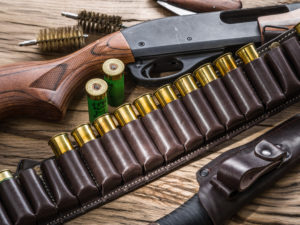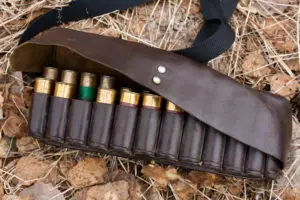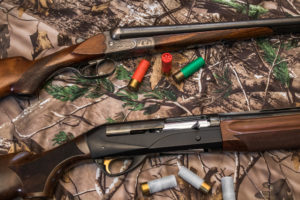If you are new to shotguns understanding what type of gun to buy and which gauge to choose for your survival needs can be difficult. Continuing the Survival Shotgun series, here is a basic rundown of the types and sizes of shotguns you should consider for your survival gear.Read the others:
- Part 1: 6 Reasons You Need One
- Part 3: Choosing The Gun
- Part 4: Understanding Loads
- Part 5: Myths Explained
- Part 6: Cleaning and Maintenance
SKIP AHEAD
Basic Operation
The basic operation of a shotgun is to fire a dose of round lead balls (shot) down a smooth bore barrel. Shotguns existed before rifles and pistols, and the concept of blasting shot down a smooth barrel may extend all the way back to ancient China. Modern Man’s innovation has managed to stuff all sorts of things into a shotgun shell, but the basic operation still remains.
Understanding Gauge
But it does explain why a 12 gauge has a larger tube than a 20 gauge. The most common chamberings for shotguns are 10, 12, 16, and 20 gauge. There is also .410 bore, which is a newer size based on the .45 Colt. It’s an American invention and is not a true gauge.
Choosing a Gauge
Why is this important? You need to pick a gauge (or bore) that is suitable for your stature or needs. Recoil is usually the determining factor, but for the prepper you want to also consider availability. Up to 50% of shotguns sold in America are 12 gauge. You will simply have an easier time finding ammunition for a 12 gauge.
If you cannot handle the recoil of a 12 gauge, then go with 20 if possible. If you cannot deal with the recoil of a 20 gauge then .410 bore is your last resort. Other gauges
For the sake of brevity and to show how versatile the shotgun is, I will stick to 12 gauge for the majority of this series.
Birdshot, slugs, and buckshot ammunition are available in 20 gauge. Birdshot and buckshot are available in .410, but you are getting three pellets of 000 buck per shell for the buckshot, versus a 12 gauge 000 load which holds 10 pellets or more.
There are also slugs available for .410, usually weighing 1/4 an ounce versus a standard 1 ounce slug in 12 gauge. .410 slug ammunition is also extremely hard to find unless it’s deer season in a shotgun hunting state.
Type of Shotgun
For most preppers, the standard survival shotgun is going to be a 12 gauge pump shotgun; readily available at your local superstore. Semi-auto shotguns are great, and usually a joy to shoot, but there are issues that should be considered.
Barring oddball rounds like the Aquila mini-shells, a pump action gun will cycle any load you feed it because of the manual loading process, including reduced recoil loads, light birdshot, and less lethal ammo with no projectile. Autoloaders rely on either recoil or gas to operate the action.
Each has it’s advantages, but both systems require more preventative maintenance and cleaning for reliable performance. What a prepper is looking for in the survival toolkit is something cheap, reliable, and versatile. And that is the 12 gauge pump action shotgun.
Questions
If you have questions, or need help choosing a gun, ask here and we will do our best to point you in the right direction.
Part 3
Part 3 of the Survival Shotgun series by mr. Smashy covers Choosing Your Gun




